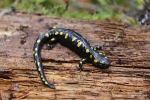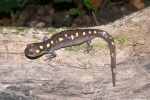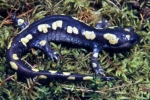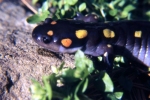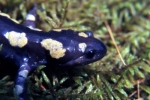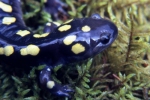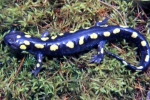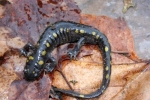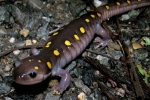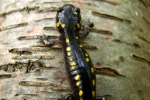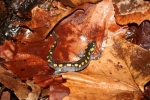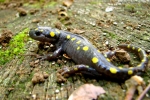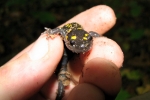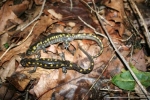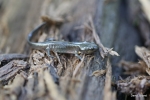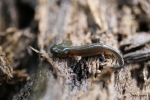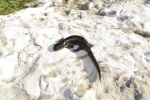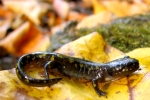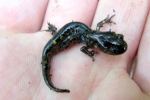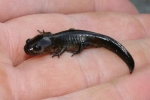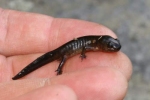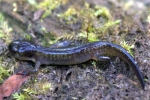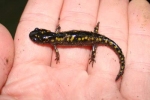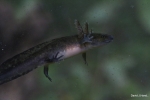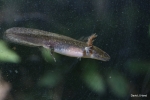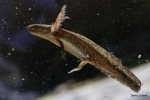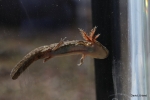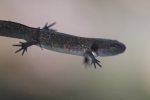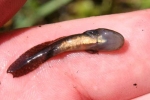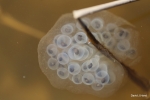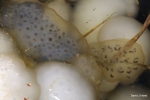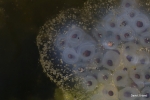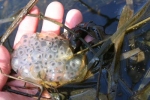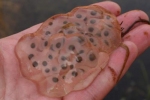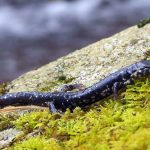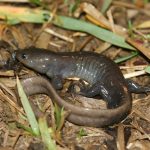Spotted Salamander
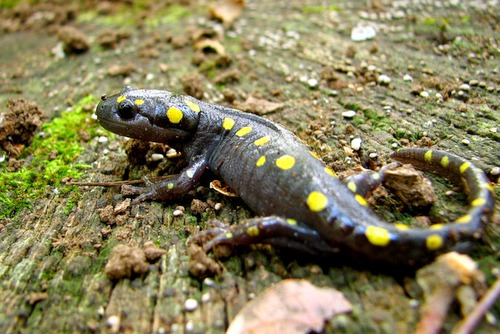
Scientific Name: Ambystoma maculatum
Size: 4.5-9.5 inches (11-24 cm) in length
Status: Abundant
Habitat:
Deciduous or mixed hardwood-coniferous forest, adjoining floodplains, lowland wood and upland ridges with temporary or permanent woodland ponds.
Description:
Large, heavy bodied species. The background color is dark black to steel gray and becomes slate gray on the lower sides. The upper surface has two rows of large irregular yellow to yellowish orange spots that extend from the head to the tip of the tail. The underside is slate gray.
- The dorsal background color is dark black to steel grey and becomes slate grey on the lower sides. The dorsal has two rows of large irregular yellow to yellowish orange spots that extend from the head to the tip of the tail.
- The ventral is slate grey.
- Large, heavy bodied species
- The legs are strong and well-developed.
- The head is broad and somewhat depressed and set off from the body by a distinct neck.
- The tail is short and oval in the cross-section and rapidly tapers to the tip.
- The dermal glands are present on the dorsal surface and well-developed on the dorsal of the tail.
- 11-13 costal grooves.
- Are similar to adults with lighter ventrals and less prominent spotting on the dorsal.
- Recently morphed individuals are uniformed brown dorsal with a light tan ventral.
- The dorsal is dull green and not strongly marked.
- The ventral is white.


References:
- Hulse, C. and McCoy C. J. and Ellen Censky ,1998. Amphibians and Reptiles of Pennsylvania and the Northeast. 55-59pp.
- Petranka, James W. ,1998. Salamanders of the United States and Canada. 76-87pp.
- Tom Diez
- Bob Hamilton
- Dave Emma
- Jason Poston
- Don Becker (psychoticnature.com)
- David J. Hand
Heads up!
Please contribute your observation of this and other herps to the Pennsylvania Amphibian and Reptile Survey. Your help is needed.
